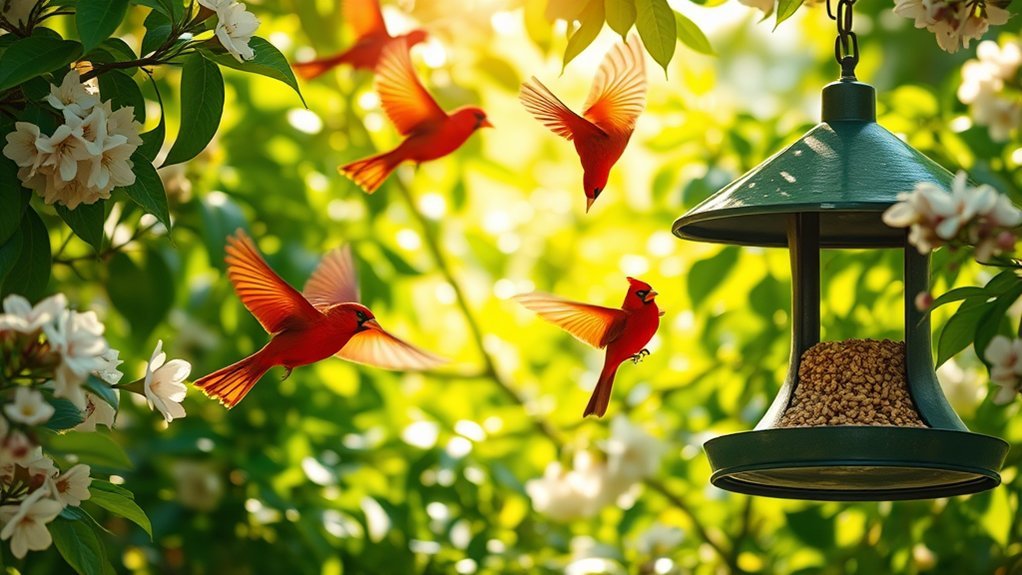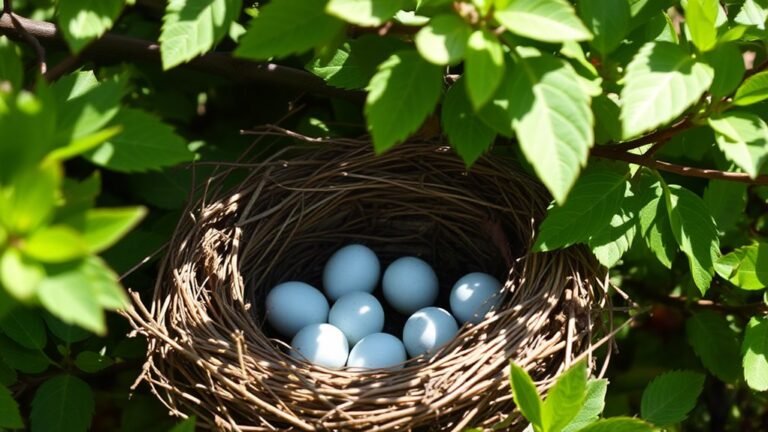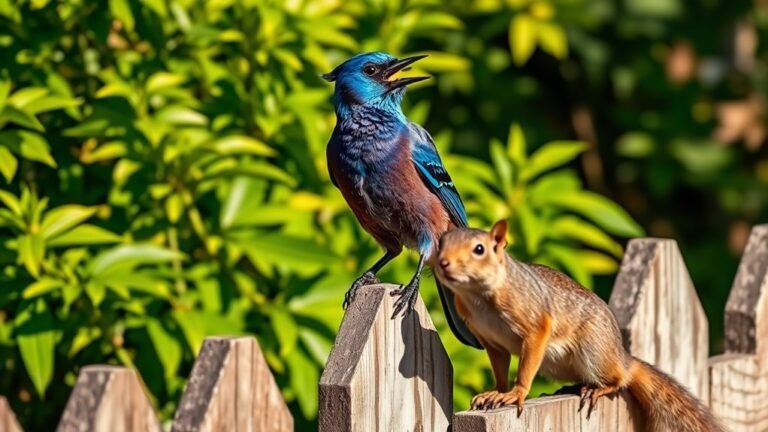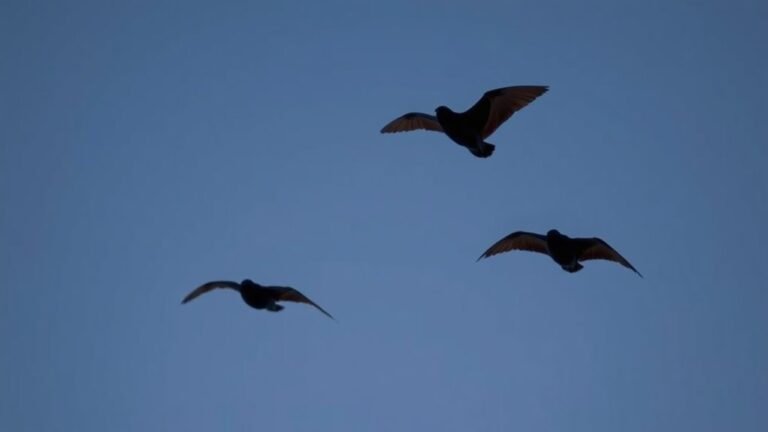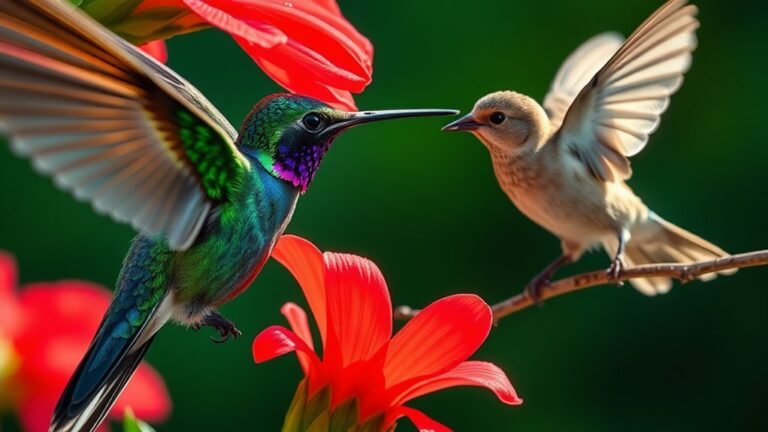Red Birds in South Carolina: Bright Highlights of the Backyard
In South Carolina, red birds such as the Northern Cardinal and Summer Tanager add color and joy to your backyard with their bright feathers and lively songs. You will often see these birds moving through your garden, bringing energy and a cheerful vibe. Their presence enhances your outdoor space and connects with deeper meanings in local culture. If you want to attract these beautiful birds to your yard, let's look at where they live and how they behave.
Key Takeaways
- The Northern Cardinal is bright red and commonly seen in South Carolina backyards. It symbolizes love and loyalty.
- In summer, the Summer Tanager brings vibrant colors and beautiful songs to gardens, adding joy to the surroundings.
- Red birds thrive in lush forests and suburban gardens. They like open spaces for easy visibility and access to food.
- Their diets include sunflower seeds, insects, and berries. Backyard feeders attract birdwatchers interested in these birds.
- Red birds build nests with twigs and grasses, showing their connections to nature while courting.
The Northern Cardinal: A South Carolina Icon
When you see a Northern Cardinal in the trees, you can't miss its bright red feathers and unique crest.
These birds are captivating not just for their looks but also for their behavior. Males sing loudly to mark their territory, while females reply with softer sounds, creating a lovely duet.
The Northern Cardinal stands for love and loyalty, making it a favorite in South Carolina backyards.
Watching their interactions can help you appreciate these birds more, reminding you of our bond with nature.
The Summer Tanager: A Colorful Visitor
The Summer Tanager is a bright red bird that visits South Carolina during the warm months.
This bird builds nests in trees and has a lovely, melodic song. Its song sounds like a soft whistle and is pleasing to hear.
When a Summer Tanager moves among the branches, it brings joy to any backyard.
Keep an eye out for this colorful visitor, as it adds beauty to your summer days.
Habitat Preferences of Red Birds

Red birds, such as the Summer Tanager, live in a variety of habitats.
These habitats include lush forests and open woodlands. They prefer areas where they can see predators and find food easily. Common habitats for red birds are riparian zones, suburban gardens, and parks.
Factors like plant density and water availability are important for their survival.
In your backyard, you can attract red birds by planting native plants and providing clean water.
Watching these bright birds in the trees connects you to nature and highlights the beauty around you. Keep an eye out for these colorful birds and enjoy their presence!
Feeding Habits and Diets
Many birdwatchers find red birds fascinating because of their bright colors. However, it's their feeding habits and diets that truly capture attention.
These birds have diverse seed preferences, including sunflower seeds and millet. They use smart feeding methods, such as foraging on the ground and visiting feeders. Watching them crack open seeds or search through your garden can be a joyful experience.
In addition to seeds, red birds eat insects and berries when they're available. Knowing about their diets not only improves your birdwatching experience but also helps you connect with nature.
Attracting Red Birds to Your Backyard
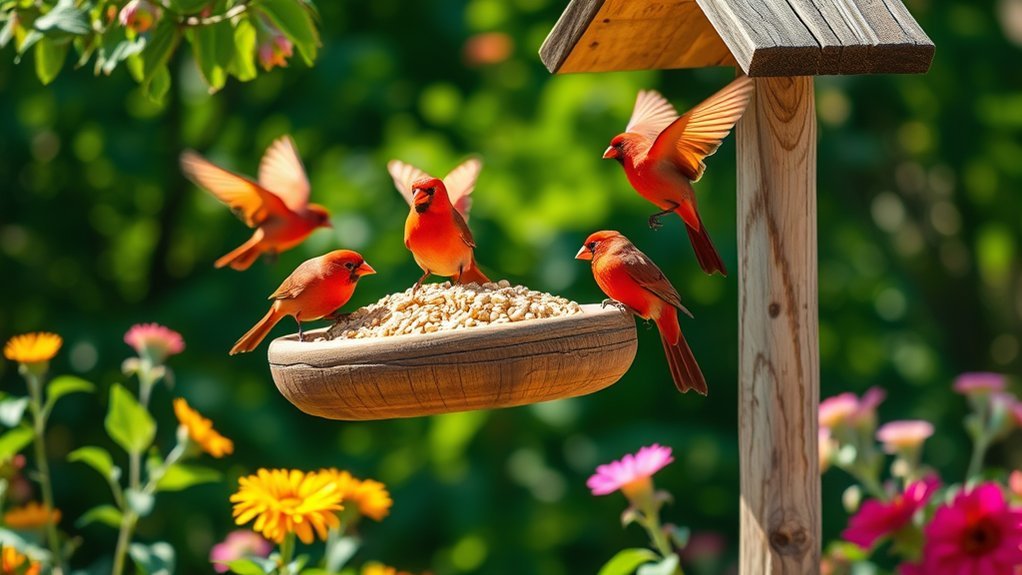
To attract red birds to your backyard, create a welcoming environment.
Use native plants for landscaping, as they provide food and shelter. Bright flowers, such as cardinal flower and red salvia, can attract these birds.
Place feeders with sunflower seeds and millet to lure them in. Make sure the feeders are easy to reach and visible from your favorite spots.
Include a birdbath as a water source for drinking and bathing.
Nesting Behaviors and Reproduction
Nesting is an important part of a red bird's life. In your backyard, you may see these bright birds building their nests. They collect twigs, grasses, and moss to create a safe home for their eggs.
The male red bird performs courtship displays to attract a female. He sings and shows off his colorful feathers. This behavior helps them find a mate and continue their species.
Once they pair up, they work together to build and guard their nest. These actions not only strengthen bonds among red birds but also help you connect with nature around you.
Seasonal Patterns and Migration
As the seasons change in South Carolina, red birds change their behaviors and locations in interesting ways. Their migration depends on temperature and food availability.
During spring and summer, you can often see these bright birds in your backyard, singing cheerful songs.
When fall comes, many of them travel to warmer places, while some stay behind, showing different patterns in their habitats.
Keep an eye out during migration; you might see a familiar red bird resting on its journey.
Observing these patterns helps you connect with nature and feel more involved in your community of bird watchers.
Enjoy this beautiful cycle!
Birdwatching Tips for Enthusiasts
After observing the beautiful migration of red birds, now is a great time to improve your birdwatching skills.
First, get good birdwatching gear, such as binoculars with at least 8x magnification for clear views. A reliable field guide is also helpful; "The Sibley Guide to Birds" offers excellent illustrations and descriptions to enhance your knowledge.
Choose a quiet place in your backyard or at a local park, and be patient—shy birds prefer stillness.
Keep a notebook to record your observations; this will enhance your experience and help you connect with other birdwatching enthusiasts.
Join local birdwatching groups to share insights and enjoy a community that loves this wonderful hobby.
Frequently Asked Questions
What Are the Best Times to Spot Red Birds in South Carolina?
To spot red birds in South Carolina, go outside in the morning. They are most active at this time. Also, pay attention during seasonal migration. Red birds often pass through, giving you a chance to see their bright colors in your yard! Enjoy the experience of birdwatching.
Are Red Birds Aggressive Towards Other Bird Species?
Red birds can display aggressive behavior, especially during mating season. They often defend their food sources from other birds. Watching these interactions can enhance your enjoyment of your backyard and create a connection with nature.
How Can I Identify Different Male and Female Red Birds?
To identify male and female red birds, focus on their color. Male red birds usually have bright red feathers. Female red birds tend to have more muted colors, often brown or yellowish. Pay attention to their behavior as well. During breeding season, male birds are often more active and make more sounds. This helps differentiate between them.
What Are the Most Common Threats to Red Birds in South Carolina?
Red birds in South Carolina face several threats. Habitat loss occurs due to urban development. Their homes are destroyed when buildings and roads replace natural spaces. Increased predation risks also pose a danger. Cats, along with other predators, often hunt these birds. Protecting their habitats is vital for the survival of red birds. It helps ensure that these beautiful creatures continue to thrive in the wild. Staying informed and supporting conservation efforts can make a difference for red birds in South Carolina.
Can Red Birds Be Trained to Feed From a Hand?
Yes, red birds can learn to feed from your hand. To train them, provide food consistently and be patient. With time, you will see interesting bird behavior. This process helps build a special bond that can bring joy to both you and the birds.

Ava is a bird enthusiast and nature lover who has spent countless hours observing and learning about the fascinating world of birds. With a passion for sharing her knowledge and inspiring others to appreciate the beauty of birds, Ava writes about her experiences and insights on avianadmirer.com.

